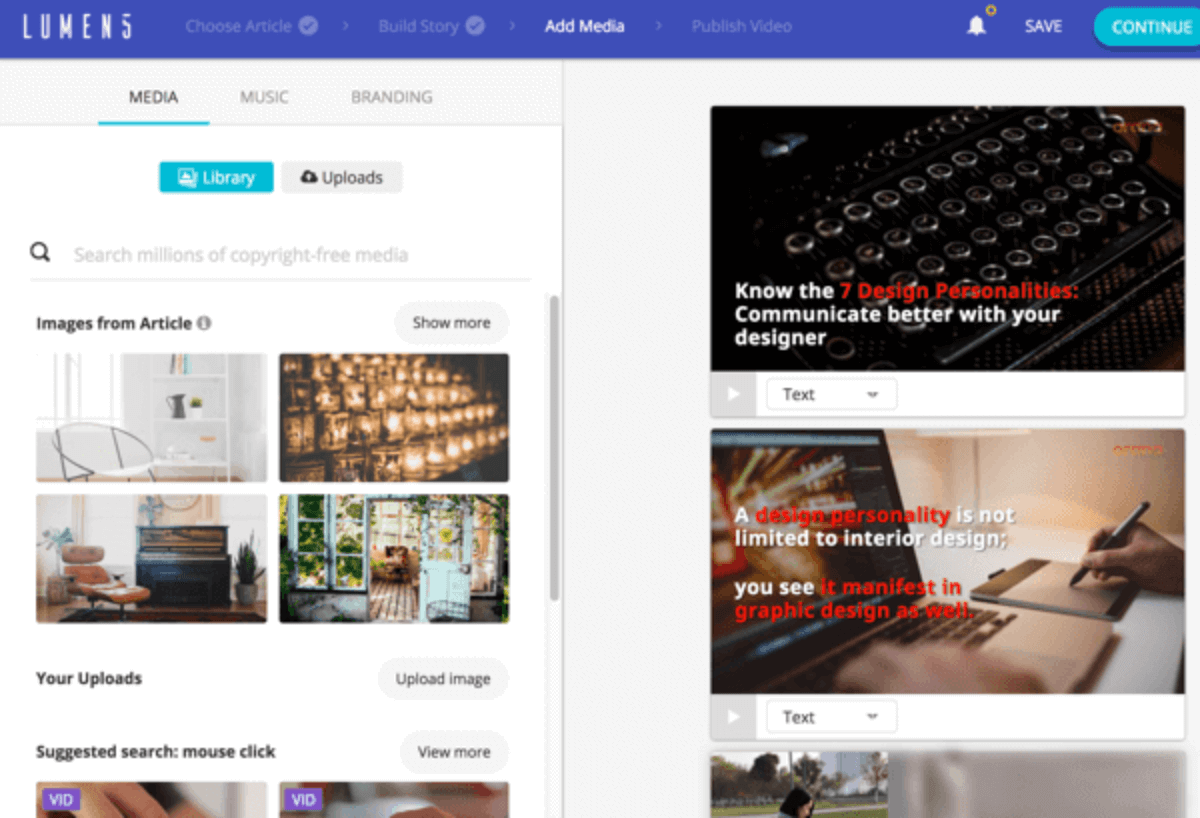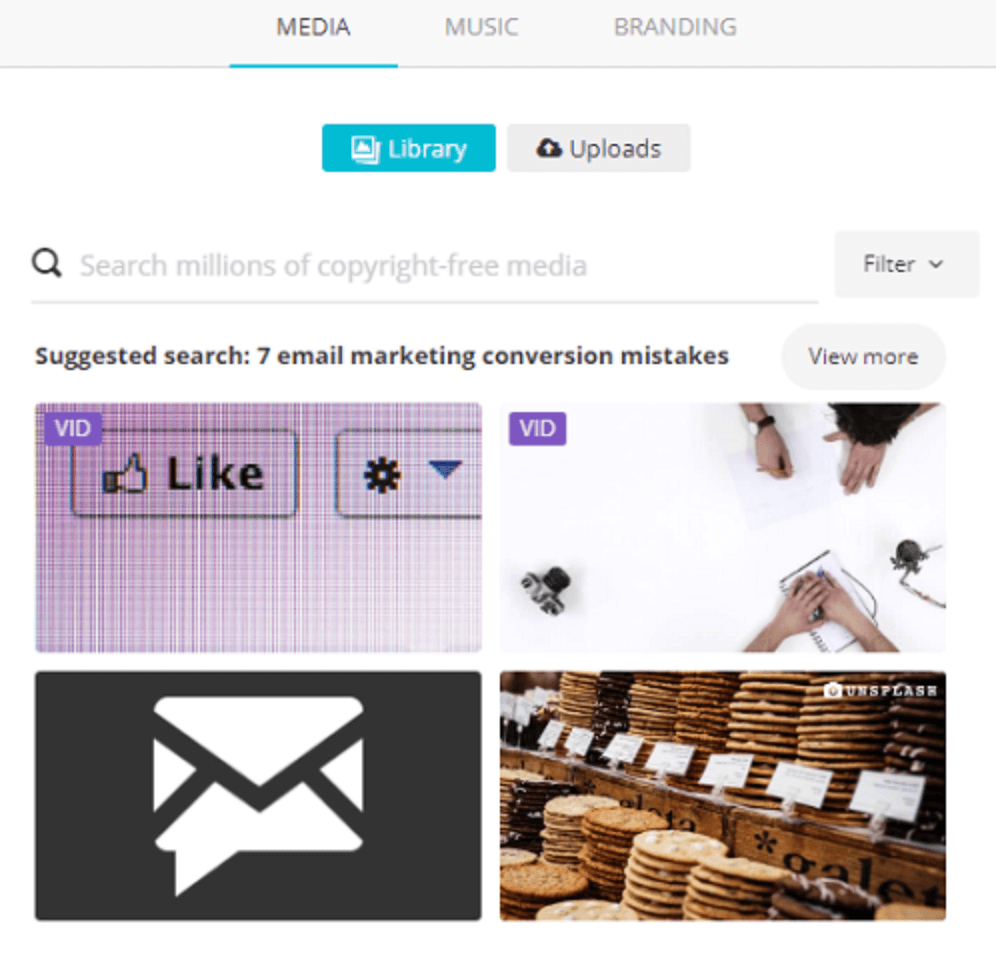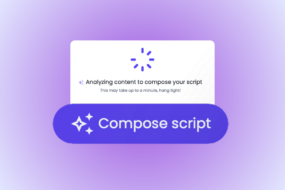
1.5 billion people watch YouTube videos every month. Everyone loves videos, but bear in mind that it’s the stories that matter. Youtubers like Lilly Singh, Pewdiepie, Anna Akana have all become popular because of their content and interesting storylines. Their videos make viewers laugh or feel excited. That said—how do you create videos with great stories? How do you get people to share and engage with the videos that you create? We’ve compiled a list of tips you need to keep in mind to create the best stories.
Pick a Message and Stick to It
I’m sure there’s a lot you want to say to your audience. Unfortunately, you can’t say everything when you’re telling a story. You have to stick to the message that you want to say and create stories based on this message.
You can certainly add striking visuals and bold text, but they should be connected to the story you’re trying to tell. Think of the objective of your video. Why are you making this video? What do you want viewers to learn by watching? How do you want them to feel?
Here’s a great example from Tesla promoting the Tesla Model S. It features the unique characteristics of a Tesla like travelling 300 miles per charge, unparalleled cargo room, a top speed of 130 mph and so on. This is a great example of how you can use video to tell a short but meaningful story:
The video also does a great job of illustrating the Tesla Model S experience. As you can see, customers can ride a fast, attractive and technologically advanced vehicle.
Identify the 4 P’s
The Muse Video Storytelling Process has a formula for highlighting the main ideas of your story—people, place, plot, and purpose. Whether you’re creating videos for a B2B, B2C or cinematic context, the framework is an effective way of summarizing your message. That said, here’s how you can use these parameters when planning your video:
Plot
What is the story you’re trying to say? Are you introducing a new product? Are you telling an inspirational story?
Purpose
What’s the purpose of your story? What do you want viewers to do as a result of watching your video? For example, your video’s purpose would be to encourage audiences to visit your website or click on the call-to-action. Or, your purpose might be to promote a product or engage with your viewers.
People
Who are the people in your video? How are they relevant to the story you’re trying to tell? Having a host talk about your company or product, has a completely different vibe from hearing a CEO talk about the same subject.
Place
Where will this video be shot? How will the location impact the story? For example you could shoot product videos in an in-house studio, but if you’re shooting to promote an event, then the location would be a lot different. These 4Ps are very basic ideas, but they’re essential to helping you tell stories that focus on your message.
Start with a Compelling Visual and Text
Research shows that Generation Z has an 8 second filter. These findings probably explain the rising trend of using Snapchat (10 second videos) and Twitter (140 characters).
Unlike previous generations, younger people are exposed to thousands of messages in a day. They don’t have time to pay attention to all the content out there, which is why they develop 8-second filters. But that doesn’t mean that you can’t attract their attention. With a video that has striking visuals, you can easily draw people in.
Start with a visual that highlights the uniqueness of your brand or product and add bold text. That way, viewers will be encouraged to click your content on Facebook and watch your videos.
Tools like Lumen5 make it easy for you to add bold text and striking visuals. This video of Nintendo Switch starts by showing a video of a dad and son playing together. It’s followed by the text, “The Nintendo 5 enables you to play games wherever and whenever you choose” to attract the interest of viewers and encourage them to keep watching.
A good tip is to start with a compelling copy and to change the colors of relevant words. That way, you can clearly tell your message, even if people watch with no sound.
Determine the Structure of Your Story
What’s the structure of the story? We spend a lot of time watching TV series, reading books and hearing the stories of others. Great stories attract our attention, and we remember them for a long time. But you don’t need to be J.K. Rowling to create compelling stories for your videos. All you need is to understand the three acts for good storytelling:
Act 1
- introduce the setup and the characters in the story (so viewers care)
Act 2
- discuss the conflict (to catch people’s attention)
Act 3
- the solution to the conflict or the final act

<
p style=”text-align: center;”>
Source
You don’t need to have a complicated storyline to create great videos.
Think of how your product could use this formula: In the first 10 seconds, we learn about the product. In the next 10 seconds, we can bring up the problem and then show how the product will solve it. This helps you build a narrative that combines all the important points together.
For example, the video below begins with an introduction of McDonald’s All Day Breakfast Offer.
Before customers could only order the breakfast menu until 10:30 am. But thanks to this new offer, they can now enjoy hotcakes, pancakes and other breakfast items, whenever they want.
Create Stories that Evoke Emotions
One thing that all viral videos have in common is their ability to bring out the emotions of their viewers. If you can create a storyline that makes viewers feel happy, sad, excited, then you’ve won. And you don’t need to create a movie to do it. Emotions appeal to viewers and help them connect to the message you’re trying to say.
“The best advertising campaigns take us on an emotional journey – appealing to our wants, needs and desires – while at the same time telling us about a product or service.” – Melinda Partin, Multimedia Producer, Digital Marketing director
When you have a short 30-second video, it’s important to target a specific emotion. Will your video leave them in awe? Is it supposed to be funny or sad? How will you make them connect to your story? A good tip is to choose a storyline that your target customers can relate to. Think about their situation or their daily life. This will help you come up with a storyline that they can connect with.
For example, the following Superbowl ad for Amazon Alexa tells a great story in a 90-second video.
Instead of talking about the advantages of using Alexa, the video shows what would happen if Alexa loses her voice and the company finds replacements. What’s more entertaining than using celebrities as substitutes?
Choose Your Music Wisely
A lot of people watch videos on mute, but that you should ignore the audio altogether. Whether you’re marketing a product, creating an inspirational video or making a movie—a song is the ticket to setting the mood and creating the message for your story. But choosing the right track is a lot harder than it looks. So, here are some tips for choosing the music for your video:
Focus on the Feelings
How do you want viewers to feel when they watch the video? Should they laugh or cry? Do you want them to feel excited about your product? The feeling that you want to evoke will play a huge role in the music of your choice. A good tip is to visit Marmoset to find music based on mood or emotion based tags like “playful” “powerful” and “whimsical.”
Don’t distract with music
Background music is the music that viewers don’t even notice while they’re watching the video. So if there’s a voice-over or someone talking, don’t let the music distract viewers from hearing the message. A lot of complaints about background music stems from the fact that it can compete with the human voice. If you’re doing a vlog, then it might be a good idea to begin with an introduction that has background music. After that, don’t use background music when talking to your audience. Alternatively, if you’re introducing viewers to your product like this video on the Samsung Galaxy Note 8, then choose an upbeat or exciting background music.
Song vs. Video form
Most songs on the radio have their own narrative structure (i.e. verse, pre-chorus, chorus, verse, chorus, bridge and so on). While you might pick a song that sets the right mood or emotion for your video, the transitions might not jive with the story you’re trying to tell. That said—you can repeat or loop parts of the song to fit the narrative structure of your video. You can cut a verse, loop the chorus and so on.
EDIT!
The last and most important step is editing. You don’t need to have a long video to keep people interested. In fact, Wistia analyzed 564,710 videos, and more than 1.3 billion plays to determine the ideal length of a video. They found that engagement was steady for up to two minutes. This means that a 30-second and a 90-second video will both hold the viewer’s attention.
You can use tools like Lumen5 to easily edit your videos. It allows you to automatically create videos through an artificial intelligence system that can help you summarize the content and match each scene with relevant videos, photos, and music.

You can also use their media library which contains millions of free media files to find shots for your videos. And you can even edit your video to reflect your brand’s color, watermark and typeface to boost brand awareness and engagement.

Amazing! Right?
Understand the Platform
If you’re posting the same video in every social platform, then think again. You can get more engagement by tweaking your content depending on the viewing habits of your audience. Here are some ways you can modify your videos in various platforms:
Keep it muted on Facebook:
According to Hubspot, 95% of viewers watch their videos on mute. This meant that you needed to add bold text to your videos to explain the visuals and enable audiences to watch it without sound.
Keep it short and sweet on Instagram:
Time spent watching video on Instagram is up more than 80% year over year. But Hubspot advises that you should keep your story about 30 seconds or less.
Use hashtags on Twitter:
Include hashtags that are relevant to the video.
<
p style=”text-align: center;”>
 Source
Source
YouTube videos should complement your articles:
Hubspot reports that audiences engage the most with videos right under two minutes or
120 seconds. They recommend that videos should complement your articles which can take 10 minutes or more to read. This saves your audience’s time and removes a mental load off of their shoulders.
Ready to Start Telling Stories?
There’s a lot of techniques and strategies that can help improve your video storytelling, but at the end of the day, it’s really up to you. If you have a story idea, then visualize how you’ll communicate it to your audience.
It’s always okay to experiment with lighting and various angles. You can also use Lumen5 to customize the video that’s perfect for your brand. The most important thing to keep in mind is to focus on the message you want to say. And evoke the right emotions from your viewers.






